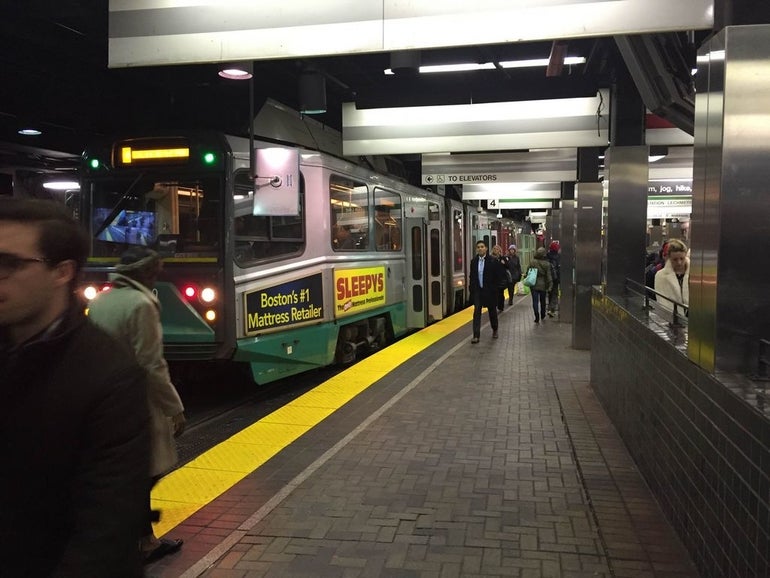After scrapping extended-hours service on weekends, the MBTA control board on Wednesday directed staff to seek measures for improving transit service for racial minorities and low-income riders.
Those measures, posed as mitigation for the late-night service elimination after action by federal regulators, could feature greater frequency on early morning trips, including bus routes to East Boston and Revere, according to official T documents.
Also possible is collaboration with app-based ride-hailing services such as Uber and Lyft – a popular choice among late-night travelers. Uber announced earlier this month it would temporarily offer a flat rate of $5 for travel along any subway or trolley line from 12:30 a.m. to 2 a.m. starting this weekend – when the T’s late-night service is set to conduct its final rides.
The directive, which was unanimously approved by the Fiscal and Management Control Board, seeks measures that address the loss of service, the business needs of the MBTA, and preserve the ability for the T to perform maintenance.
After-hours maintenance work was one of the main reasons, along with the cost and what was viewed as meager ridership, that the board decided to eliminate service running past the usual 1 a.m. stop on weekends.
The late-night service runs subways, trolleys and 10 key bus routes for about an hour past the normal stop time.
After the Feb. 29 vote to eliminate the service, the Federal Transit Administration notified the T on March 3 that it was “concerned” about the MBTA vote and said the authority must conduct an equity analysis on the service elimination.
In a Feb. 5 letter seeking a waiver of the equity analysis requirement, the MBTA’s chief counsel keyed in on areas where service could be improved for certain demographics.
Chief Counsel John Englander wrote the MBTA is “considering targeted service frequency improvements on certain bus and/or subway routes that are heavily used by minority and low-income riders. Improvements would be directed where ridership and crowding demonstrate the greatest need and include very early morning trips used primarily for job access.”
The T has recently hired bus drivers and in seeking to outsource the operation of low-ridership routes, officials at the transit agency have said they hope to boost capacity on the busiest bus routes.
A presentation about the equity analysis on Wednesday included some specific ideas, such as additional early morning weekday trips on bus routes 116 and 117 running in East Boston and Revere; additional operator hours for route 111 running from Haymarket to Revere or route 66 running from Dudley Square to Harvard Square; and more weekend service on route 109 running from Sullivan Square through Malden or route 426 running from Haymarket to Lynn.
The late-night service began March 2014 and officials scaled it back last June.
“Discontinuing the late-night service that has been operated on all MBTA rapid transit lines since July 1, 2015, would result in a disparate burden on minority riders and a disproportionate burden on low-income riders,” read a memo on the equity analysis by the Central Transportation Planning Staff of the Boston Region Metropolitan Planning Organization. The memo concluded elimination of extended-weekend-hours on the 10 bus routes “would not result in a disparate burden on minority riders, but would result in a disproportionate burden on low-income riders.”
The analysis found the number 1 bus, running from Roxbury to Cambridge down Massachusetts Avenue, had the highest late-night ridership at 305 passengers per weekend with 42 percent minority and 55 percent low-income. The route 28 bus, running from Mattapan to Ruggles along Blue Hill Avenue, had 258 passengers and 96 percent of them were minority and 100 percent were low-income, according to the T’s estimates.

